Prediction of Food Factory Energy Consumption Using MLP and SVR Algorithms
Abstract
:1. Introduction
1.1. Energy Consumption of the Industrial Sector
1.2. FEMSs
1.3. Research Purpose
1.4. Background
2. Machine Learning Model Background
2.1. Machine Learning (ML)
2.2. Artificial Neural Network (ANN)
2.3. Multilayer Perceptron (MLP)
2.4. Support Vector Regression (SVR)
3. Materials and Methods
3.1. Data Collection
3.2. Variable Selection
3.3. Implementation of Energy Consumption Prediction Models
3.4. Prediction Accuracy Evaluation
3.4.1. Coefficient of Variation of Root Mean Square Error (CvRMSE)
3.4.2. Coefficient of Determination, R2
4. Results and Discussion
4.1. Variable Selection Results
4.2. Energy Consumption Prediction Results
4.2.1. Electricity Consumption Prediction Results
4.2.2. LNG Consumption Prediction Results
4.2.3. Energy Consumption Prediction Model Selection
5. Conclusions
Author Contributions
Funding
Data Availability Statement
Conflicts of Interest
References
- Lee, H.A. Derivation Method of Retrofit Priority of Building Envelope Elements through Regression Analysis Based on Energy Data. Master’s Thesis, Department of Architectural Engineering in the Graduate School of Yonsei University, Seoul, Republic of Korea, 2019. [Google Scholar]
- Ministry of Trade, Industry and Energy (MOTIE). 2020 Energy Survey Results. 2022. Available online: http://english.motie.go.kr/www/main.do (accessed on 1 December 2022).
- Kim, C.-W.; Kim, J.; Kim, S.-M.; Hyeon-tae, H. Factory energy management system (FEMS) technology trends and application cases for energy reduction in manufacturing industry. J. Soc. Air-Cond. Refrig. Eng. Korea 2015, 44, 22–27. [Google Scholar]
- MOTIE; National IT Industry Promotion Agency (NIPA). 2013 Report on the Status of EMS Introduction. 2014. Available online: https://www.nipa.kr/eng/contents.do?key=239 (accessed on 1 December 2022).
- Yeo, I.G. Pay Attention FEMS Strengthened Regulations Greenhouse Gas Energy; Korea Heating Air-Conditioning Refrigeration & Renewable Energy News (KHARN): Seoul, Republic of Korea, 2020. [Google Scholar]
- Comesaña, M.M.; Febrero-Garrido, L.; Troncoso-Pastoriza, F.; Martínez-Torres, J. Prediction of building’s thermal performance using LSTM and MLP neural networks. Energies 2020, 10, 7439. [Google Scholar]
- Kim, E.J. Introduction to Artificial Intelligence, Machine Learning, and Deep Learning with Algorithms; Wikibook: Gyeonggi, Republic of Korea, 2019. [Google Scholar]
- Lee, C.; Jung, D.E.; Lee, D.; Kim, K.H.; Do, S.L. Prediction performance analysis of artificial neural network model by input variable combination for residential heating loads. Energies 2021, 14, 756. [Google Scholar] [CrossRef]
- Runge, J.; Zmeureanu, R. Forecasting energy use in buildings using artificial neural networks: A review. Energies 2019, 12, 3254. [Google Scholar] [CrossRef]
- Choi, J.S.; Yong-Tae, S. LSTM-based power load prediction system design for store energy saving. J. Korea Inf. Electron Commun. Technol. 2021, 14, 307–313. [Google Scholar]
- Yoon-Gwang, N.; Hong, S.-G.; Cho, S.-H.; Chang-yong, C. A study on the prediction of building energy consumption using deep learning technique. J. Korean Soc. Mech. Technol. 2019, 21, 1136–1144. [Google Scholar]
- Jeon, W.-S.; Hwang, J.-H.; Seo, D.J. GIS-Based Prediction of electricity consumption for apartment complex by using machine learning. J. Korean Inst. Commun. Inf. Sci. 2022, 1, 407–408. [Google Scholar]
- Junlong, Q.; Shin, J.W.; Go, J.-L.; Seung-gwon, S. A study on energy consumption prediction from building energy management system data with missing values using SSIM and VLSW algorithms. J. Korean Inst. Electr. Eng. 2021, 70, 1–540. [Google Scholar]
- Ito, M. Textbooks of Machine Learning with Python; Park, K.-S., Translator; Hanvit Media: Seoul, Republic of Korea, 2020. [Google Scholar]
- Yang, Y.-G.; Park, J.-C. A study energy efficiency prediction model with AI-based in healthcare building. J. Soc. Air-Cond. Refrig. Eng. Korea 2022, 34, 336–344. [Google Scholar]
- Park, B.-R.; Choi, E.J.; Moon, J.W. Performance tests on the ANN model prediction accuracy for cooling load of buildings during the setback period. J. Korea Inst. Ecol. Archit. Environ. 2017, 17, 83–88. [Google Scholar]
- Sadeghi, A.; Younes Sinaki, R.; Young, W.A.; Weckman, G.R. An intelligent model to predict energy performances of residential buildings based on deep neural networks. Energies 2020, 13, 571. [Google Scholar] [CrossRef]
- Choi, W.; Park, J.w.; Jeong, S.-G.; Park, H.-B. Multi-objective optimization of flexible wing using multidisciplinary design optimization system of aero-nonlinear structure interaction based on support vector regression. J. Korean Soc. Aeronaut. Space Sci. 2015, 43, 601–608. [Google Scholar]
- Oh, S. Comparison of a response surface method and artificial neural network in predicting the aerodynamic performance of a wind turbine airfoil and its optimization. Appl. Sci. 2020, 10, 6277. [Google Scholar] [CrossRef]
- Sudheer, C.; Maheswaran, R.; Panigrahi, B.K.; Mathur, S. A hybrid SVM-PSO model for forecasting monthly streamflow. Neural. Comput. Appl. 2014, 24, 1381–1389. [Google Scholar] [CrossRef]
- MOTIE. The Third Energy Master Plan. 2019. Available online: https://climatepolicydatabase.org/policies/3rd-energy-master-plan (accessed on 1 December 2022).
- Kim, J.-B.; Oh, S.-C.; Ki-Seong, S. Comparison of MLR and SVR based linear and nonlinear regressions—Compensation for wind speed prediction. J. Korean Inst. Electr. Eng. 2016, 65, 851–856. [Google Scholar]
- Oh, B.-C.; Seong-Yeol, K. Development of SVR based short-term load forecasting algorithm. J. Korean Inst. Electr. Eng. 2019, 68, 95–99. [Google Scholar]
- Ceperic, E.; Ceperic, V.; Baric, A. A strategy for short-term load forecasting by support vector regression machines. IEEE Trans. Power Syst. 2013, 28, 4356–4364. [Google Scholar] [CrossRef]
- Rea, L.; Parker, A. Designing and Conducting Survey Research: A Comprehensive Guide, 3rd ed.; John Wiley & Sons, Inc., Jossey-Bass: Hoboken, NJ, USA, 2005. [Google Scholar]
- Ahn, Y.; Kim, H.J.; Lee, S.K.; Sean Kim, B. Prediction of heating energy consumption using machine learning and parameters in combined heat and power generation. J. Soc. Air-Cond. Refrig. Eng. Korea 2019, 31, 352–360. [Google Scholar]
- Vapnik, V. The Nature of Statistical Learning Theory; Springer: New York, NY, USA, 1995. [Google Scholar]
- ASHRAE (American Society of Heating, Refrigerating and Air Conditioning Engineers). ASHRAE Guideline 14: Measurement of Energy and Demand Savings; ASHRAE: Atlanta, GA, USA, 2002; pp. 4–165. [Google Scholar]

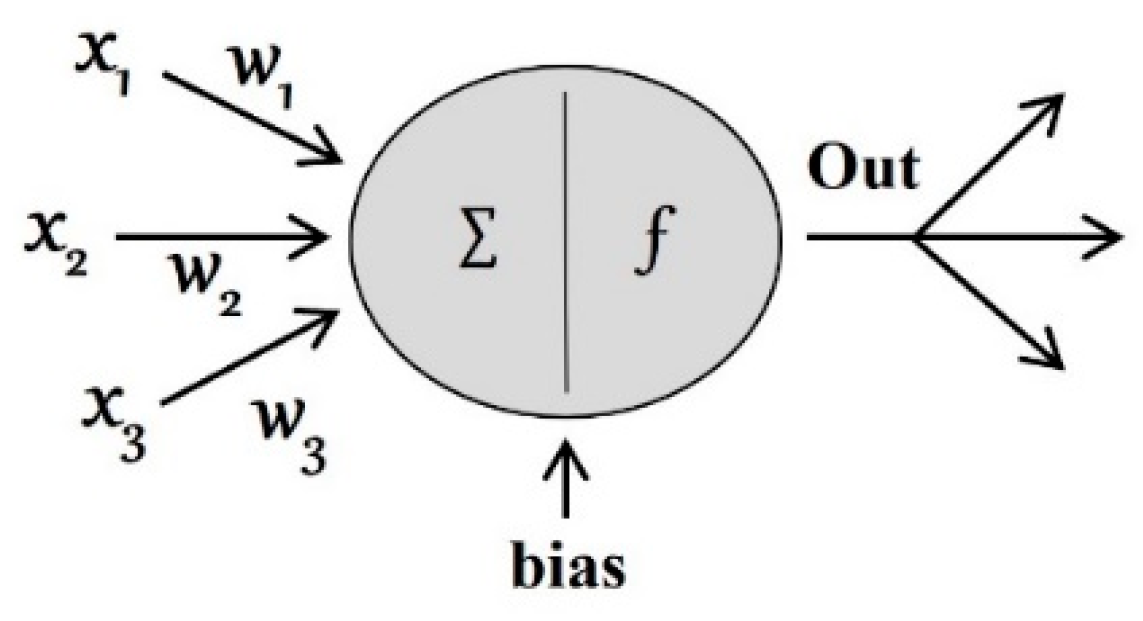
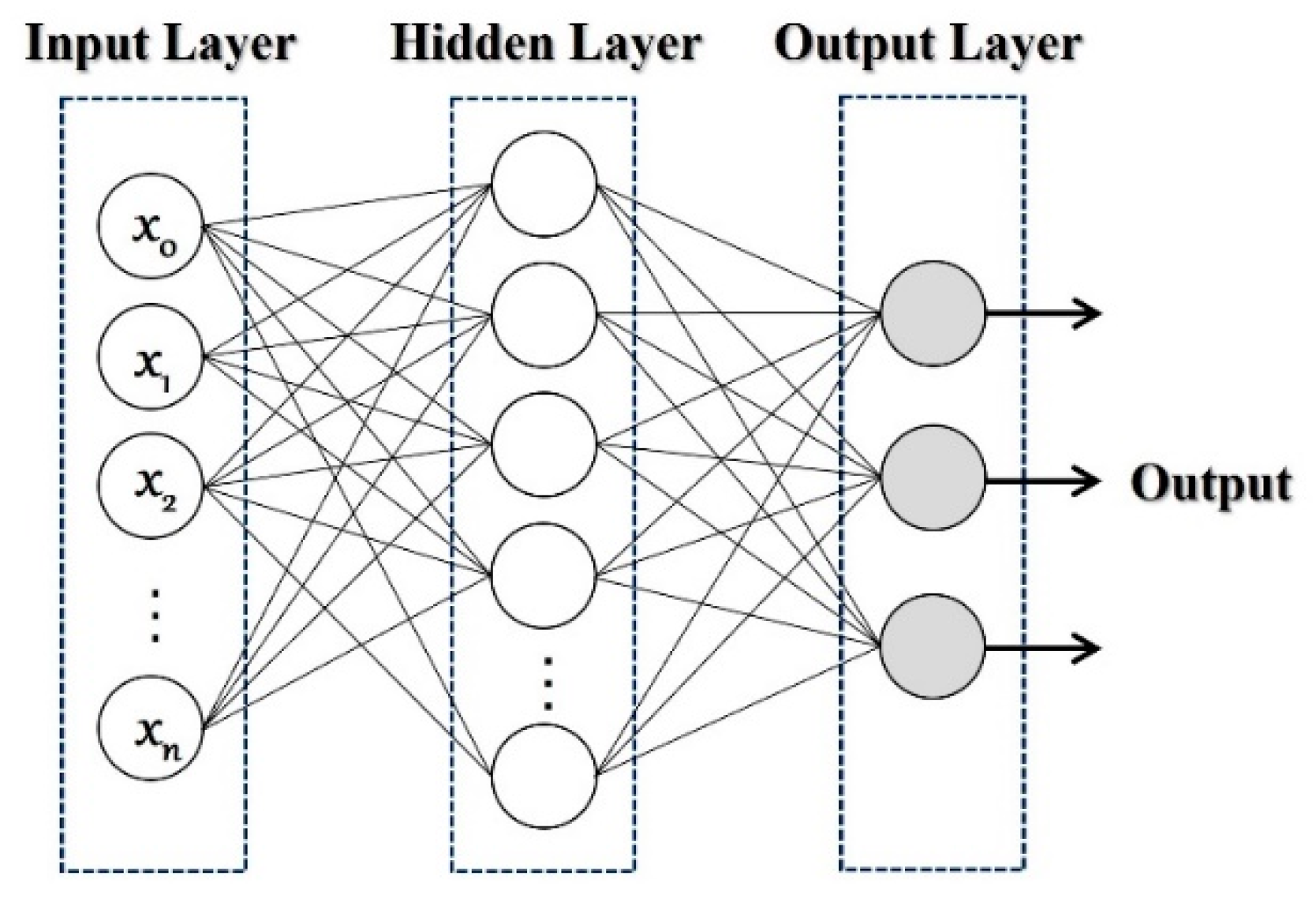
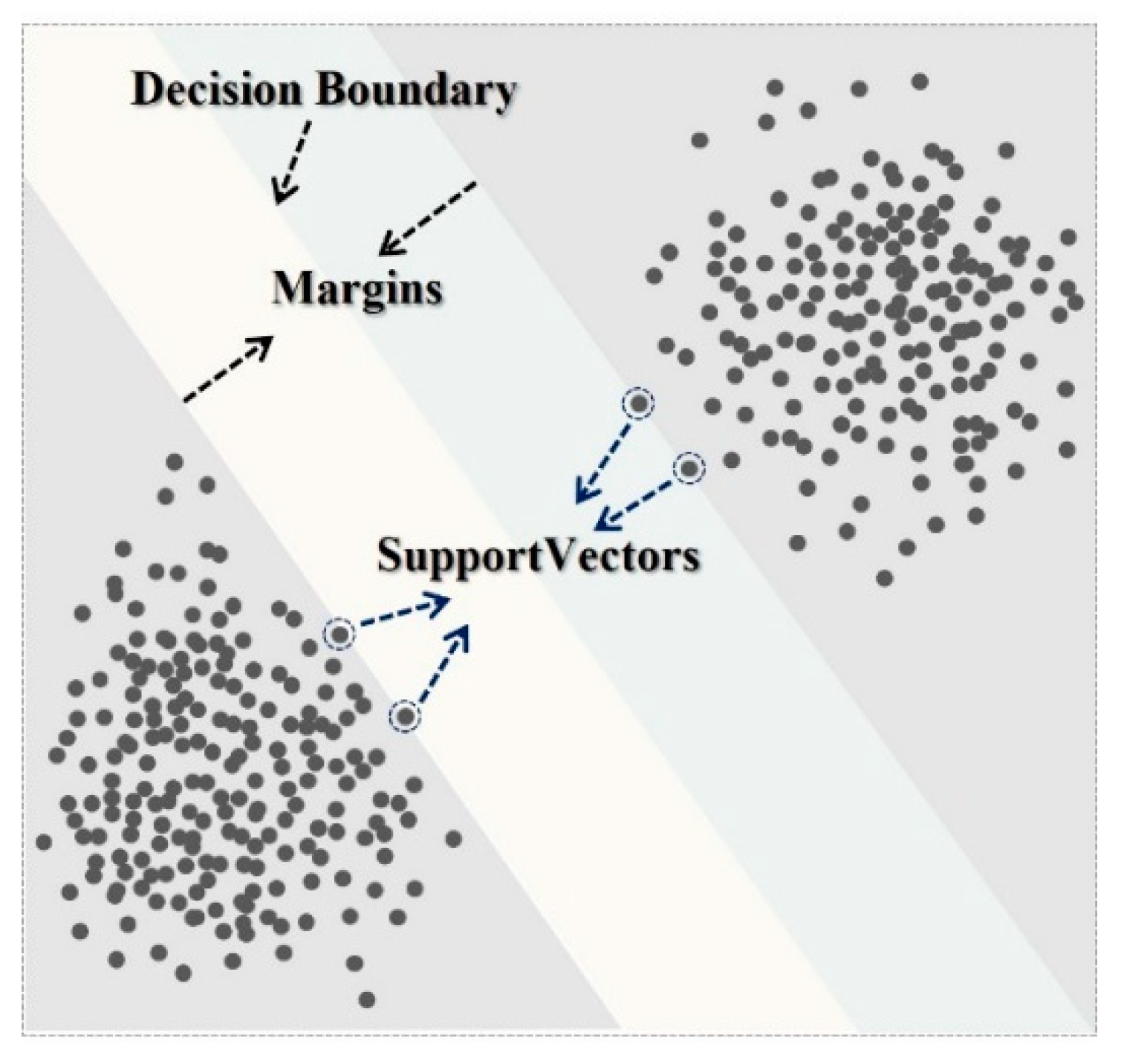
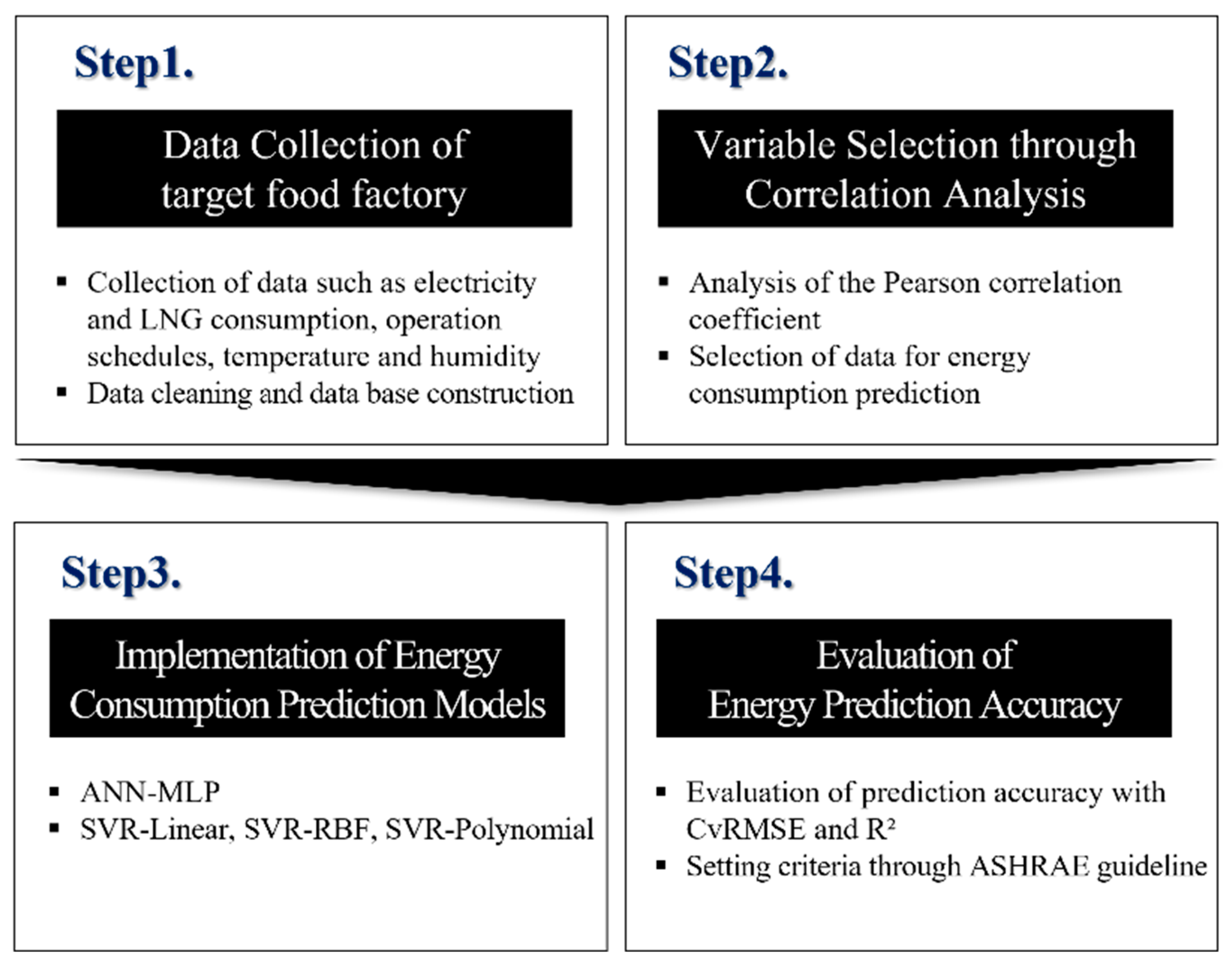
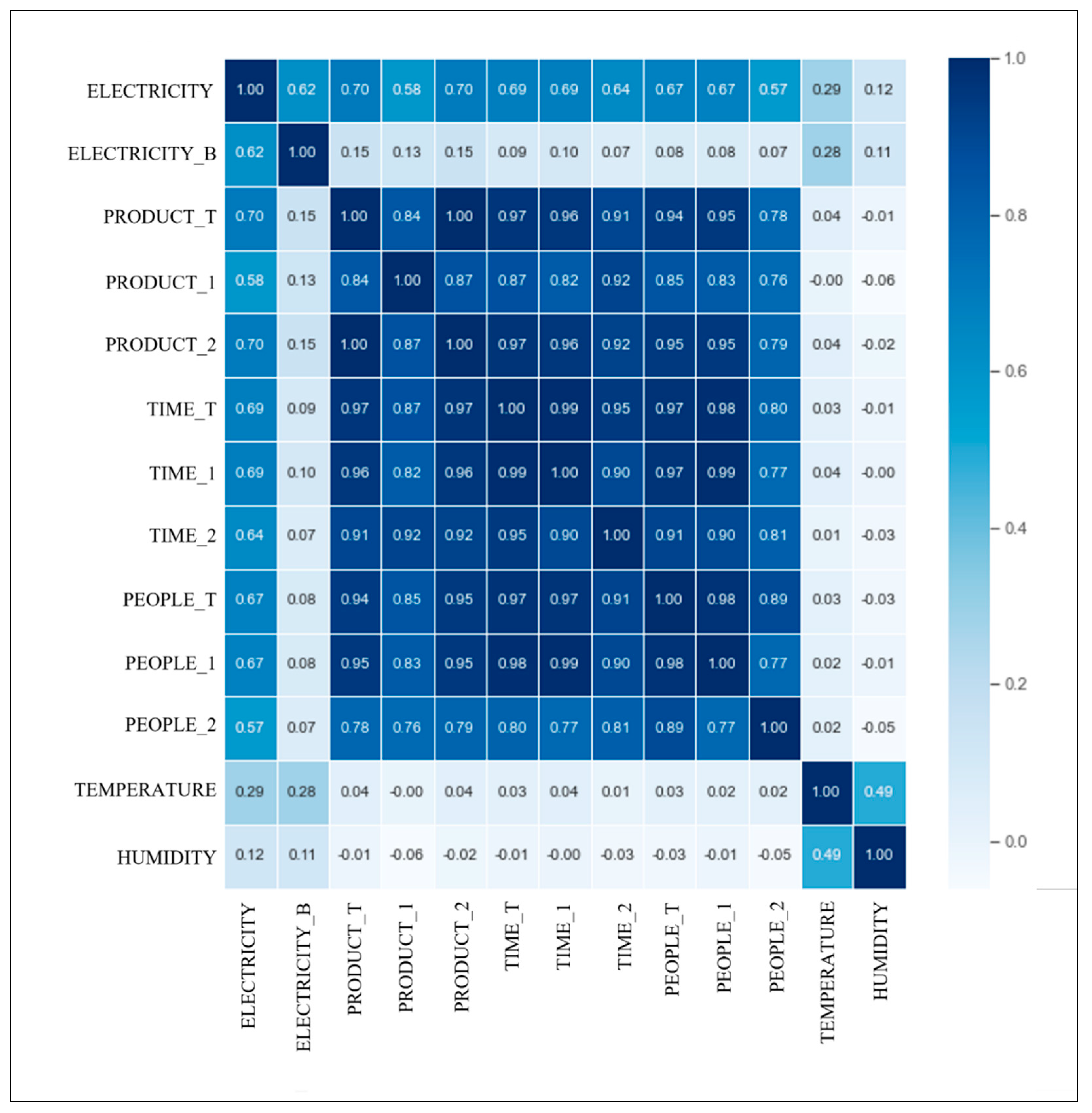

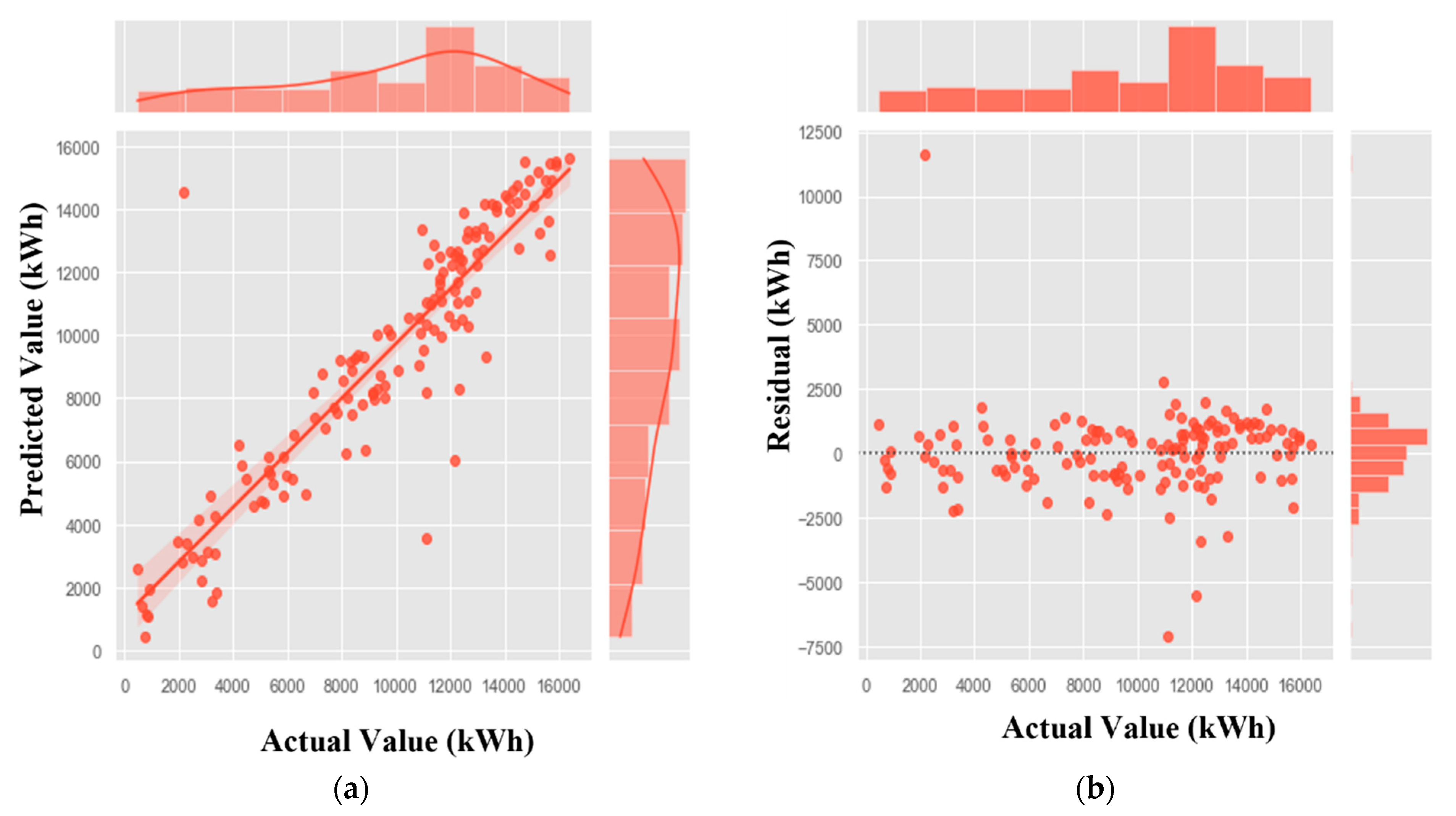

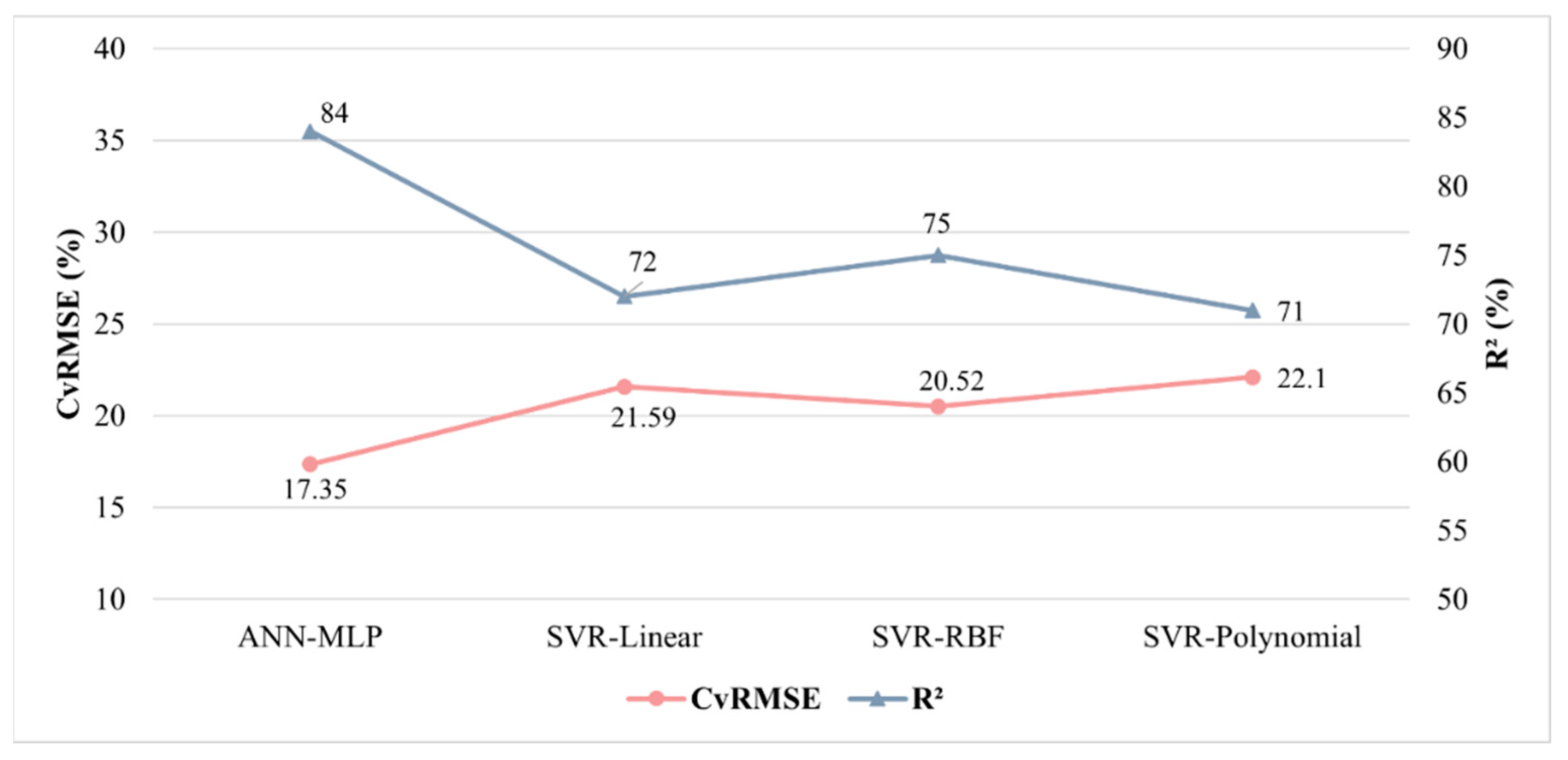
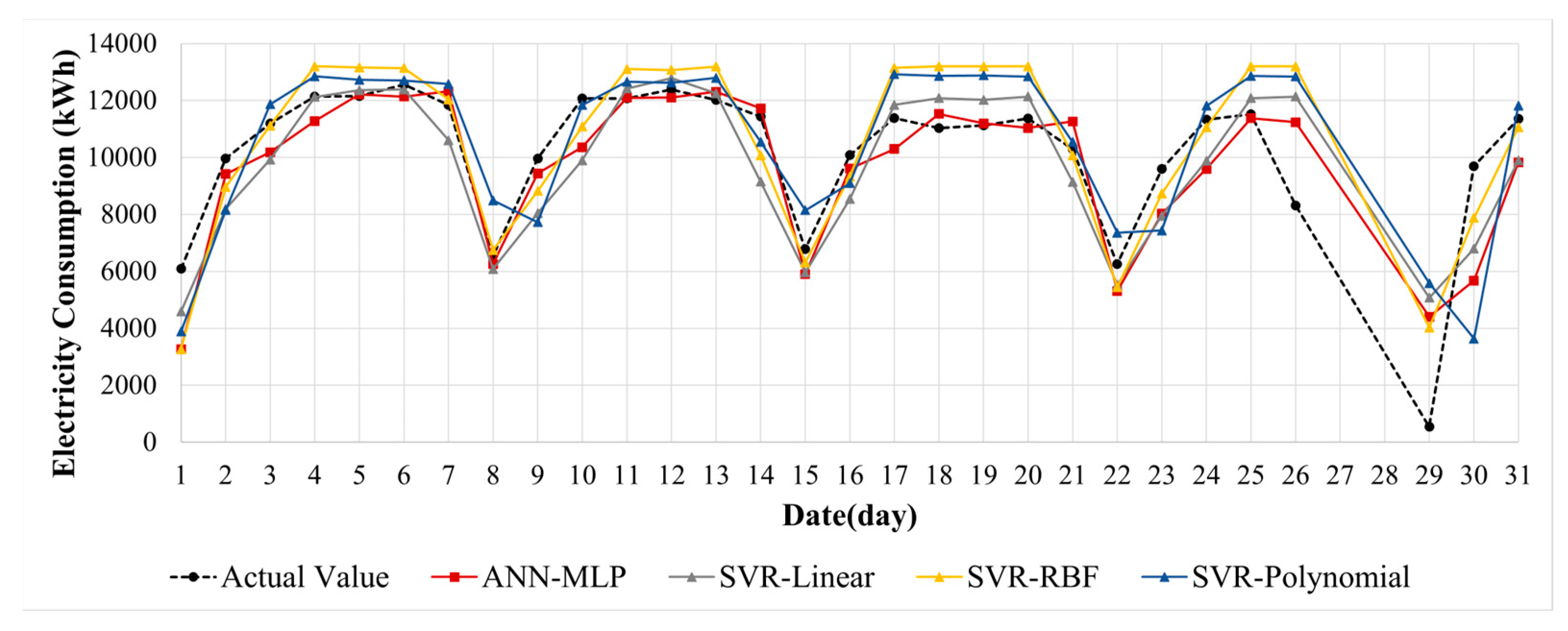
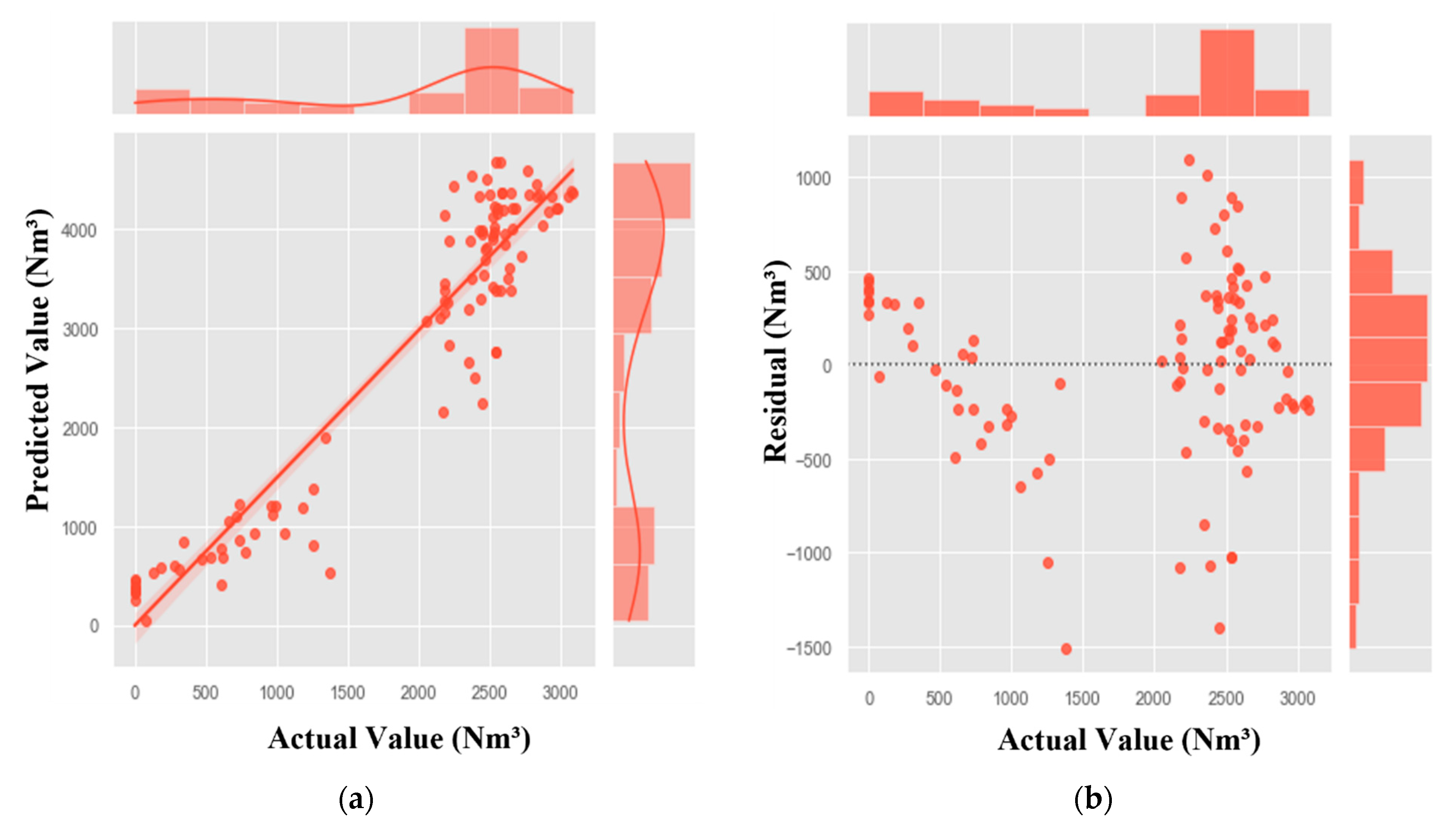

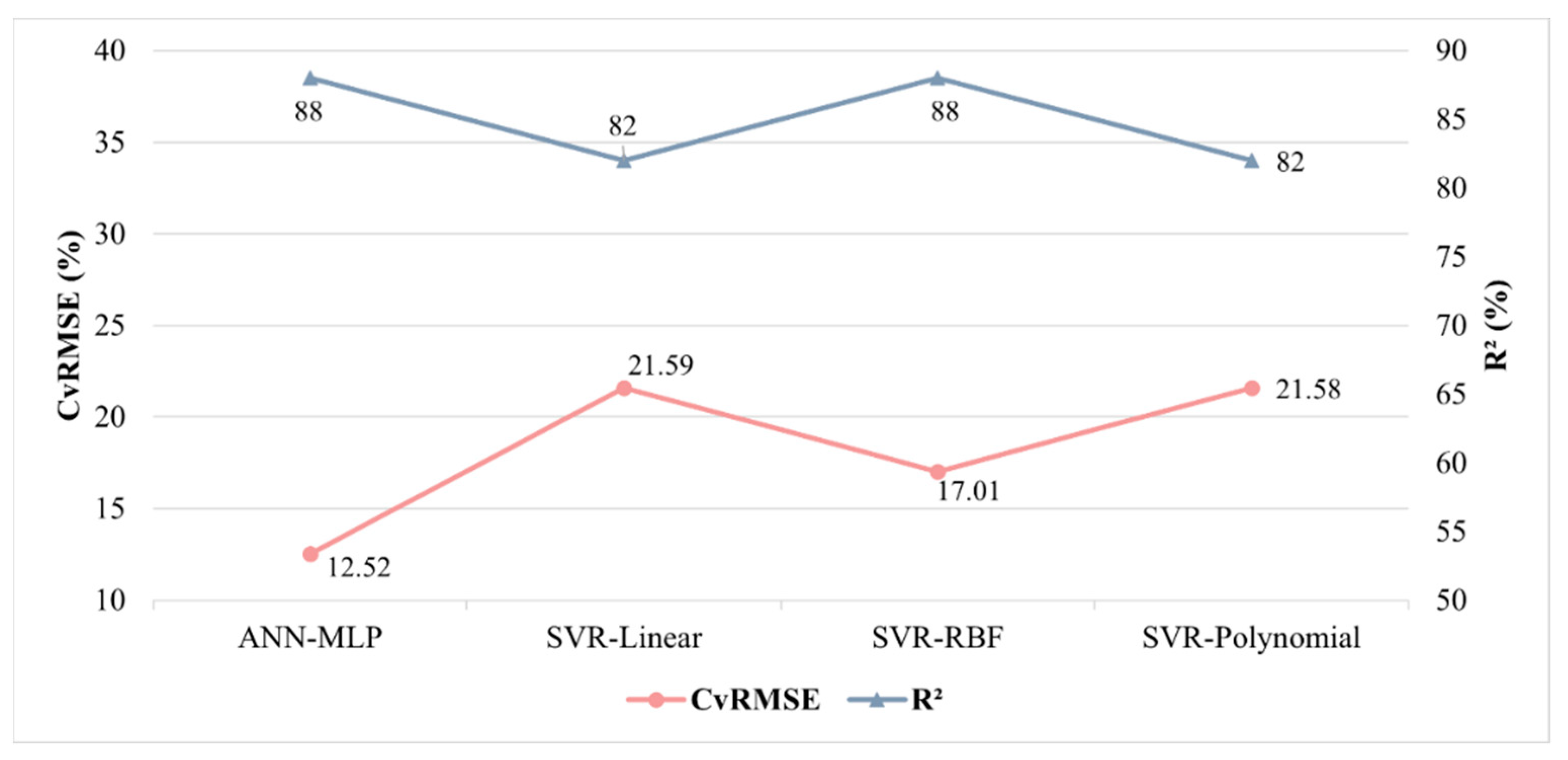
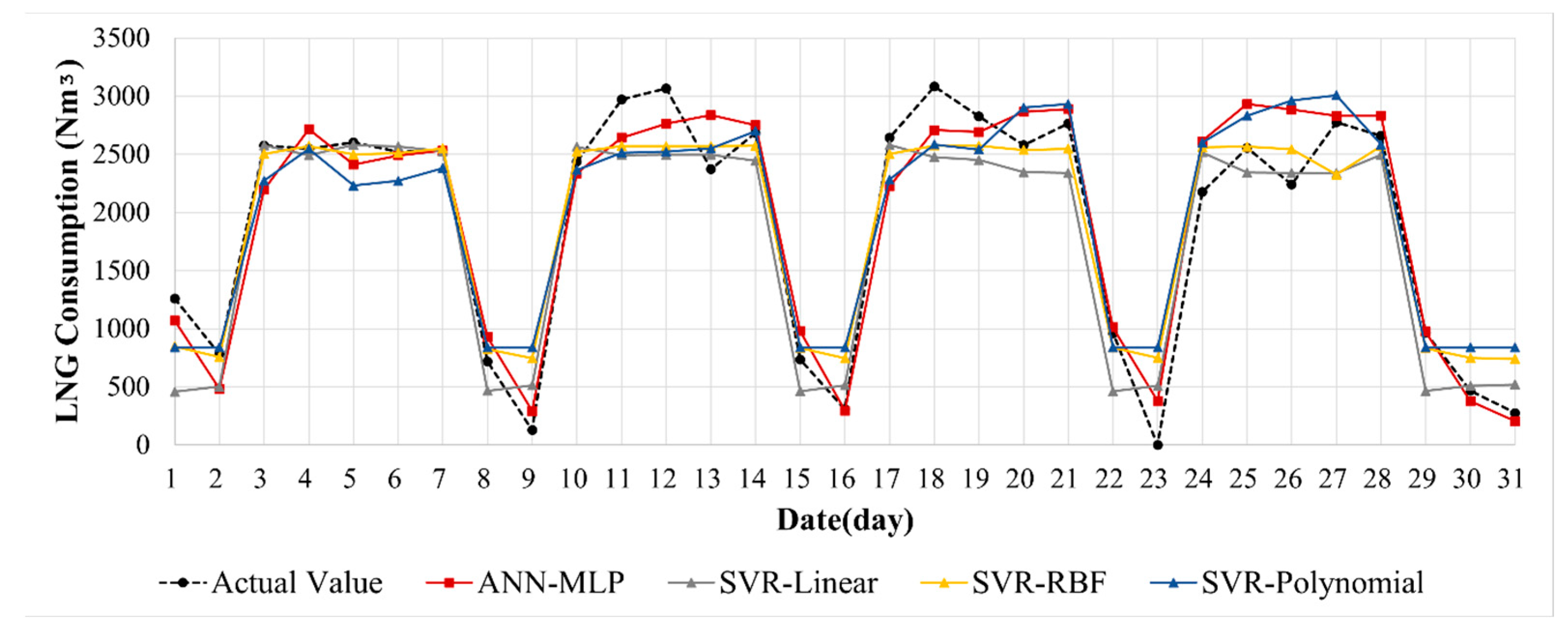
| 2013 | 2016 | 2019 | |
|---|---|---|---|
| Industrial sector | 118,991,000 TOE (59.4% of total) | 130,010,000 TOE (60.4% of total) | 136,348,000 TOE (60.2% of total) |
| Measurement Data | Production Data | Electricity Data | External Environment Data |
|---|---|---|---|
| LNG consumption LNG flow rate/temperature/pressure | Product production Input time Input workforce | Electricity consumption | Outdoor temperature Outdoor humidity |
| Category | Unit | CvRMSE |
|---|---|---|
| ASHRAE Guideline14 | Monthly | <10% |
| Hourly | <30% | |
| Target value | Daily | <20% |
| Category | Data Type | Notation |
|---|---|---|
| Electricity consumption | Electricity consumption of the day | ELECTRICITY |
| Electricity consumption of the previous day | ELECTRICITY_B | |
| Product production | Total product production | PRODCUT_T |
| Product production in factory 1 | PRODUCT_1 | |
| Product production in factory 2 | PRODUCT_2 | |
| Input time | Total input time | TIME_T |
| Input time in factory 1 | TIME_1 | |
| Input time in factory 2 | TIME_2 | |
| Input workforce | Total input workforce | PEOPLE_T |
| Input workforce in factory 1 | PEOPLE_1 | |
| Input workforce in factory 2 | PEOPLE_2 | |
| External environment | Outdoor temperature | TEMPERATURE |
| Outdoor humidity | HUMIDITY |
| Notation | Correlation Coefficient |
|---|---|
| ELECTRICITY | 0.62 |
| ELECTRICITY_B | 0.70 |
| PRODCUT_T | 0.58 |
| PRODUCT_1 | 0.70 |
| PRODUCT_2 | 0.69 |
| TIME_T | 0.69 |
| TIME_1 | 0.64 |
| TIME_2 | 0.67 |
| PEOPLE_T | 0.67 |
| PEOPLE_1 | 0.67 |
| PEOPLE_2 | 0.57 |
| TEMPERATURE | 0.29 |
| HUMIDITY | 0.12 |
| Category | Data Type | Notation |
|---|---|---|
| LNG consumption | LNG consumption of the day | LNG |
| LNG consumption of the previous day | LNG_B | |
| LNG flow rate/temperature/pressure | Total LNG flow rate of the previous day | LNG_FLOW_B_T |
| Boiler 1 LNG temperature of the previous day | LNG_TEMPERATURE_B_1 | |
| Boiler 2 LNG temperature of the previous day | LNG_TEMPERATURE_B_2 | |
| Boiler 1 LNG pressure of the previous day | LNG_PRESSURE_B_1 | |
| Boiler 2 LNG pressure of the previous day | LNG_PRESSURE_B_2 | |
| Product production | Total product production | PRODCUT_T |
| Product production in factory 1 | PRODUCT_1 | |
| Product production in factory 2 | PRODUCT_2 | |
| External environment | Outdoor temperature | TEMPERATURE |
| Outdoor humidity | HUMIDITY |
| Notation | Correlations Coefficient |
|---|---|
| LNG_B | 0.40 |
| LNG_FLOW_B_T | 0.39 |
| LNG_TEMPERATURE_B_1 | 0.06 |
| LNG_TEMPERATURE_B_2 | −0.04 |
| LNG_PRESSURE_B_1 | −0.23 |
| LNG_PRESSURE_B_2 | −0.24 |
| PRODCUT_T | 0.93 |
| PRODUCT_1 | 0.94 |
| PRODUCT_2 | 0.79 |
| TEMPERATURE | −0.04 |
| HUMIDITY | 0.04 |
| MLP | SVR | ||||
|---|---|---|---|---|---|
| Linear | RBF | Polynomial | |||
| Electricity | CvRMSE | 17.35% | 21.59% | 20.52% | 22.10% |
| R2 | 0.84 | 0.72 | 0.75 | 0.71 | |
| LNG | CvRMSE | 12.52% | 21.59% | 17.01% | 21.58% |
| R2 | 0.88 | 0.82 | 0.88 | 0.82 | |
Disclaimer/Publisher’s Note: The statements, opinions and data contained in all publications are solely those of the individual author(s) and contributor(s) and not of MDPI and/or the editor(s). MDPI and/or the editor(s) disclaim responsibility for any injury to people or property resulting from any ideas, methods, instructions or products referred to in the content. |
© 2023 by the authors. Licensee MDPI, Basel, Switzerland. This article is an open access article distributed under the terms and conditions of the Creative Commons Attribution (CC BY) license (https://creativecommons.org/licenses/by/4.0/).
Share and Cite
Lee, H.; Kim, D.; Gu, J.-H. Prediction of Food Factory Energy Consumption Using MLP and SVR Algorithms. Energies 2023, 16, 1550. https://doi.org/10.3390/en16031550
Lee H, Kim D, Gu J-H. Prediction of Food Factory Energy Consumption Using MLP and SVR Algorithms. Energies. 2023; 16(3):1550. https://doi.org/10.3390/en16031550
Chicago/Turabian StyleLee, Hyungah, Dongju Kim, and Jae-Hoi Gu. 2023. "Prediction of Food Factory Energy Consumption Using MLP and SVR Algorithms" Energies 16, no. 3: 1550. https://doi.org/10.3390/en16031550
APA StyleLee, H., Kim, D., & Gu, J.-H. (2023). Prediction of Food Factory Energy Consumption Using MLP and SVR Algorithms. Energies, 16(3), 1550. https://doi.org/10.3390/en16031550






